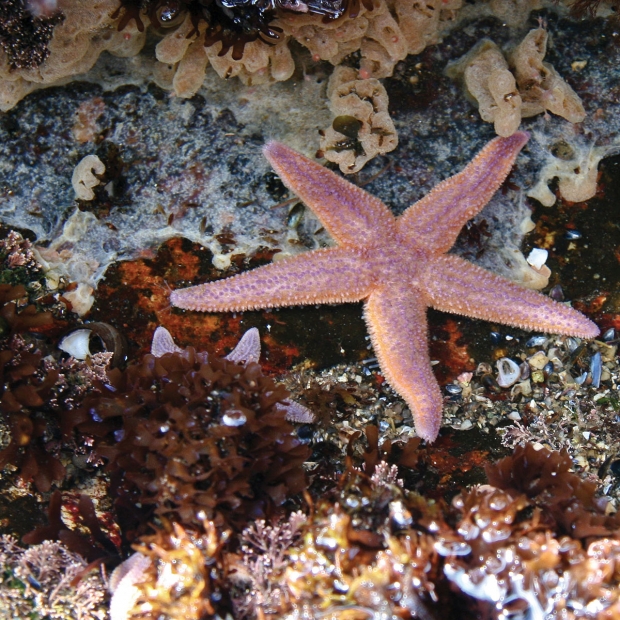
Long referred to simply as starfish, this animal isn’t a “fish” at all. Scientists officially call it a sea star. Semantics aside, the five-armed invertebrate (no backbone) has a rough, spiny skin, making it an echinoderm, somewhat similar to sea urchins and sand dollars. They also have thousands of tiny tube feet with little suctions that help channel water throughout their body and grab hold of prey.
- Forbes Sea Stars have few natural enemies, thanks to their rough, spiny exterior and overall non-nutritional body. Sea turtles have been known to chomp off an appendage, though.
- They eat snails, clams, oysters, mussels, and barnacles and feed by latching their tube feet onto the prey’s shells, then prying the shells open just enough for them to push their stomach inside the prey’s shell. Exerting up to 12 pounds of pressure, their arms are akin to a can opener.
- The sea stars’ five arms (rays) extend from a central, red-eye spot. If one of the rays is torn off, another will grow back quickly. Occasionally, the starfish will even regenerate a couple of extra arms. They vary in color and can grow to five inches in length.
- Forbes Sea Stars are commonly found in the shallow, intertidal waters of the Atlantic, from the Gulf of Maine to the Gulf of Mexico. They hang out on rocks, jetties, and pilings, and are especially keen on hanging around oyster, mussel, and clam beds, where food is readily available.